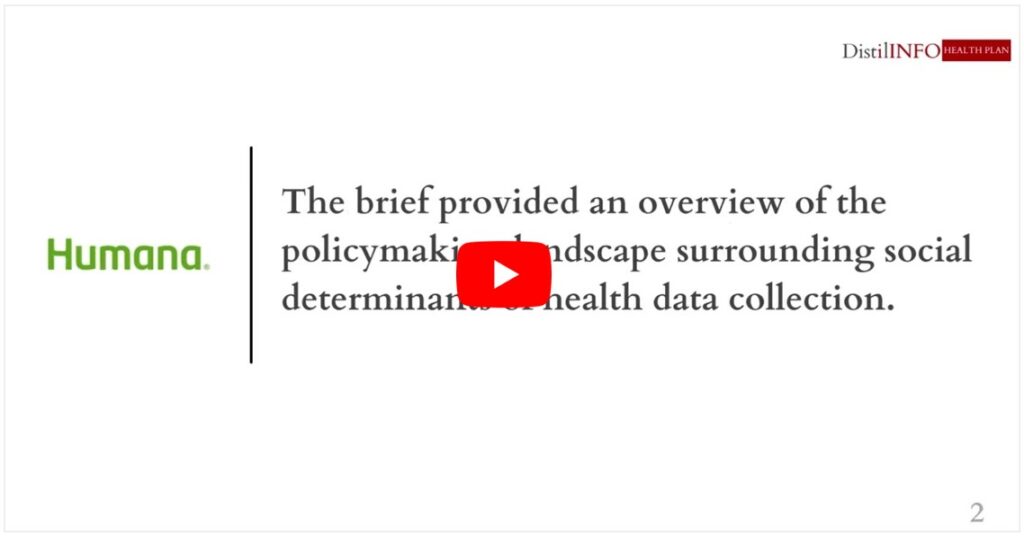
Payers, providers, and policymakers have taken a variety of approaches to social determinants of health data collection and interventions, according to an issue brief from Humana.
The brief provided an overview of the policymaking landscape surrounding social determinants of health data collection.
The brief highlighted a couple of initiatives that CMS has spearheaded related to social needs. For example, in the 2023 Medicare Advantage and Part D Proposed Rule and Rate Notice which the agency released in February 2022, CMS incorporated elements that were intended to advance social needs data collection.
Specifically, the proposed rule and rate notice suggested that special needs plans incorporate social determinants of health screening questions into their health risk assessments (HRAs). CMS also proposed introducing a health-related social needs (HRSN) measurement for the star ratings.
At the request of CMS, the National Committee for Quality Assurance (NCQA) released a proposal detailing a new social needs measure for HEDIS that would assess both a health plan’s screening of and actions related to HRSNs.
“With the expectation that screening data from different plans and care settings may be aggregated and that positive screening rates will ultimately be reported publically and used for comparison between plans, we support the requirement for standardized screening questions for HRSNs,” the Humana brief stated.
The payer noted how different screening tools may produce varying results, highlighting the benefits of a standardized screening tool.
CMS requested more insight into what data points are most indicative of the impact that social determinants of health can have on beneficiaries. Humana noted that individual-level social risk measures have proven effective at predicting utilization and cost trends.
Through the Center for Medicare and Medicaid Innovation (CMMI), CMS started the Accountable Health Communities (AHC) model, which incorporates social determinants of health screenings and which lowered emergency department utilization in fee-for-service Medicare by nine percent.
However, while the program saw some success, many beneficiaries in the program did not ultimately see their needs resolved.
A third of individuals in the program were lost to follow-up, another 31 percent had unknown status by 2020, 8 percent had needs that could not be met, 10 percent opted out after being accepted, and 4 percent were connected to resources but their needs were still not resolved. Only 14 percent of the beneficiaries in the AHC model had their health-related social needs resolved.
The brief also assessed state Medicaid policies around health-related social needs. Humana noted that state Medicaid programs and managed care organizations gather significant social determinants of health data. The data goes toward plan design, care coordination, quality measurement, population health management programs, risk adjustment, and more.
Out of 50 states and the District of Columbia, 24 states screen for health-related social needs, 11 states leverage standardized screenings, 5 track social service referrals outcomes, and 7 use Z codes.
Humana outlined its social determinants of health data standardization process. It involves first categorizing the data, then establishing a data ecosystem. The payer maps out screening questions and develops an asset hierarchy as well as a social health record. Finally, at the end of these steps the social determinants of health product emerges.
This is how Humana designed its Longitudinal Human Record, which informs its social determinants of health interventions.
Humana also leans on its population health analytics suite. This tool incorporates over 80 data sets to develop a comprehensive perspective on Humana’s members.
Lastly, the payer highlighted its platform for social determinants of health referrals. Humana, like some other payers, partners with a third-party vendor to connect members with community-based organizations that will be able to address members’ health-related social needs.
The payer concluded by outlining three goals that the organization has around social determinants of health data collection and application. The payer plans to continue to support its own social needs data ecosystem, empower providers to utilize social determinants of health data well, and advocate for interoperability in social determinants of health data.
Source: HealthPayer Intelligence

